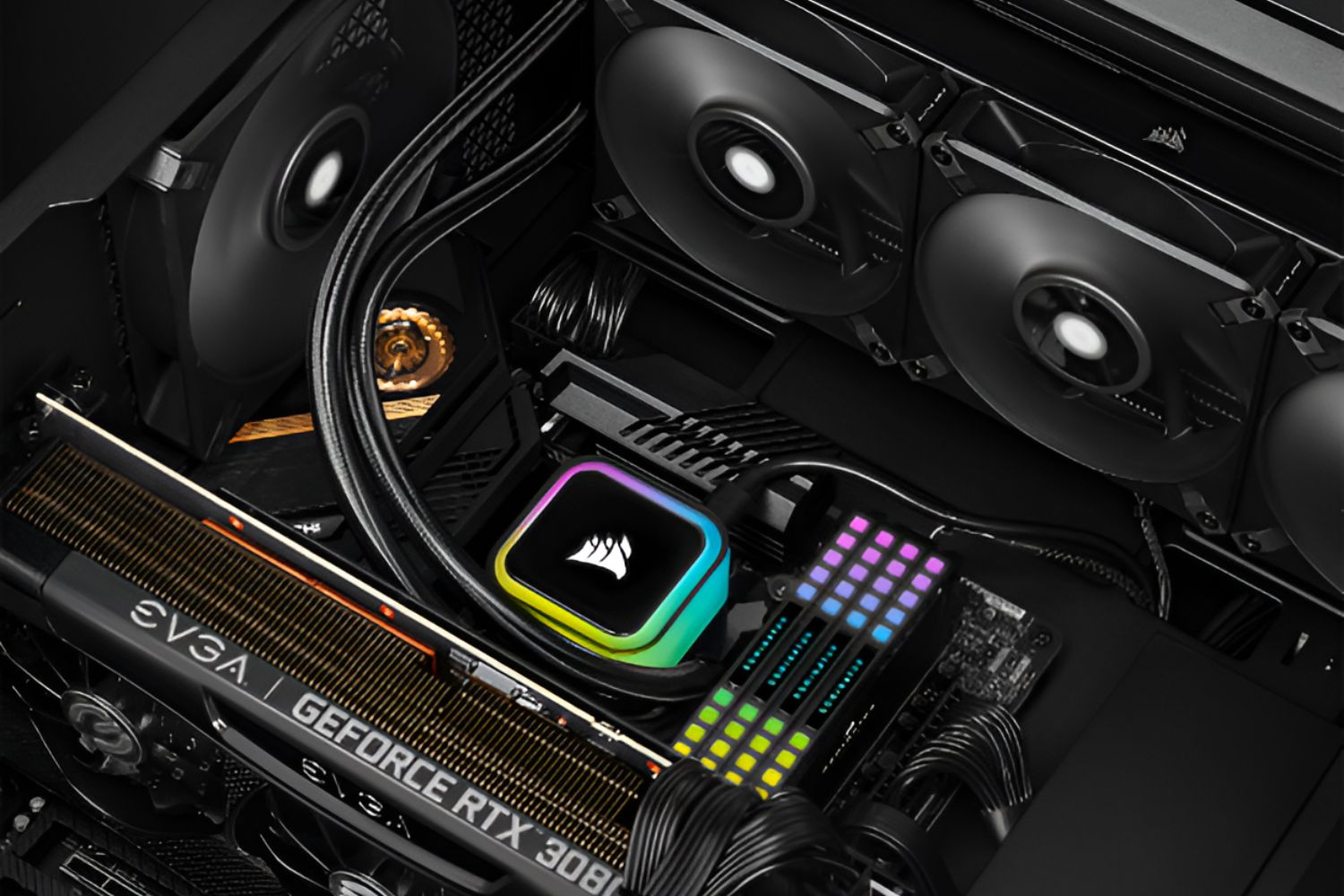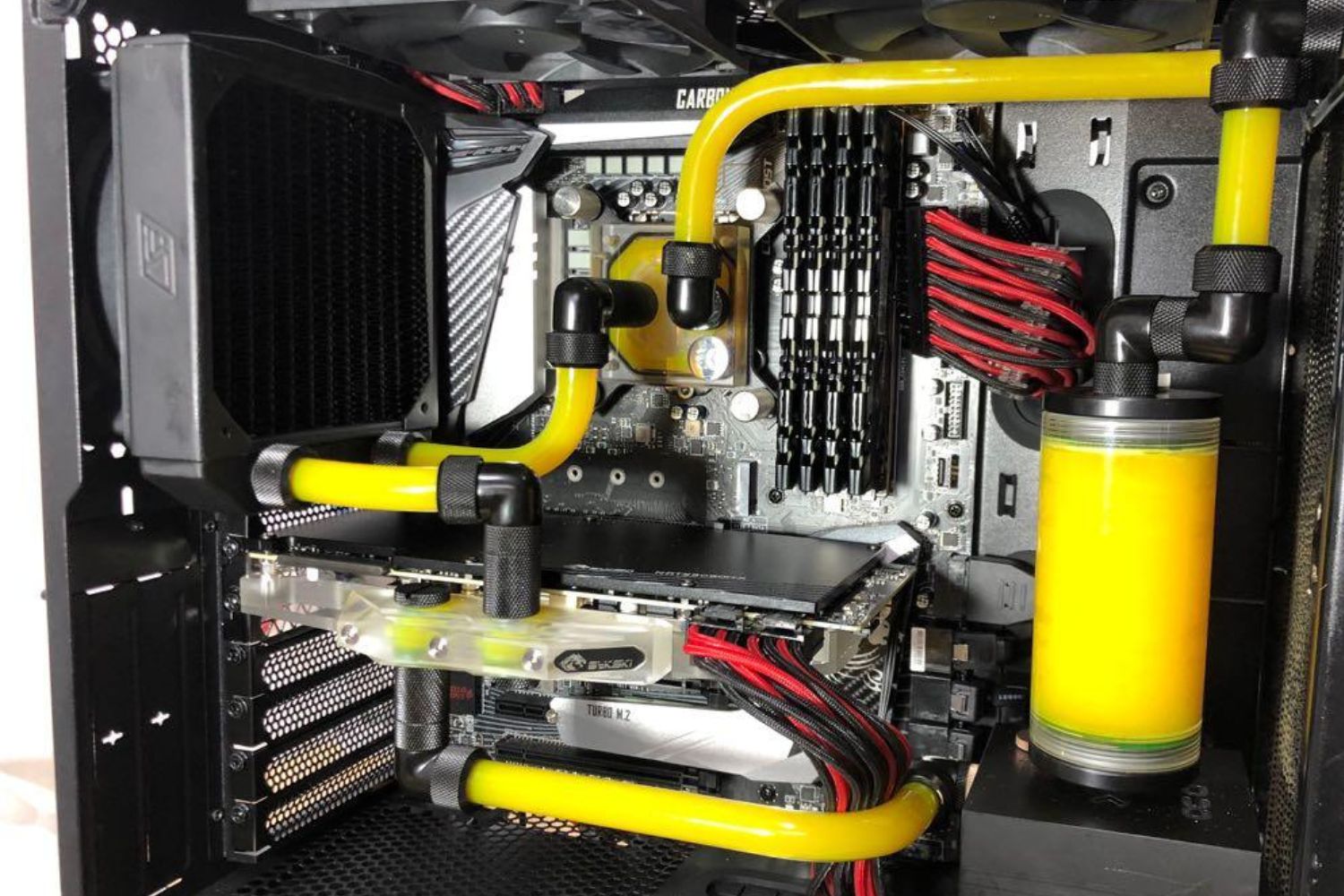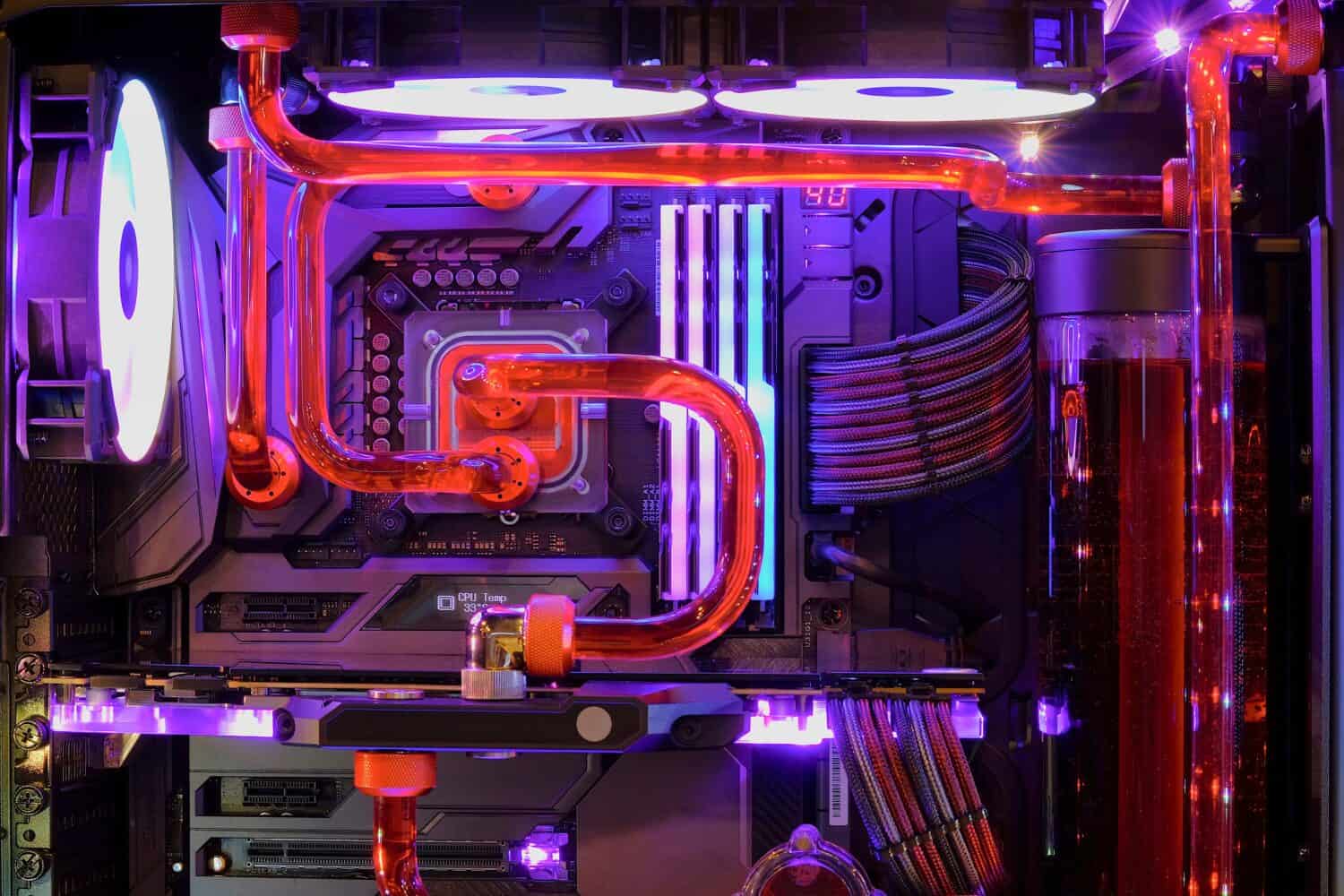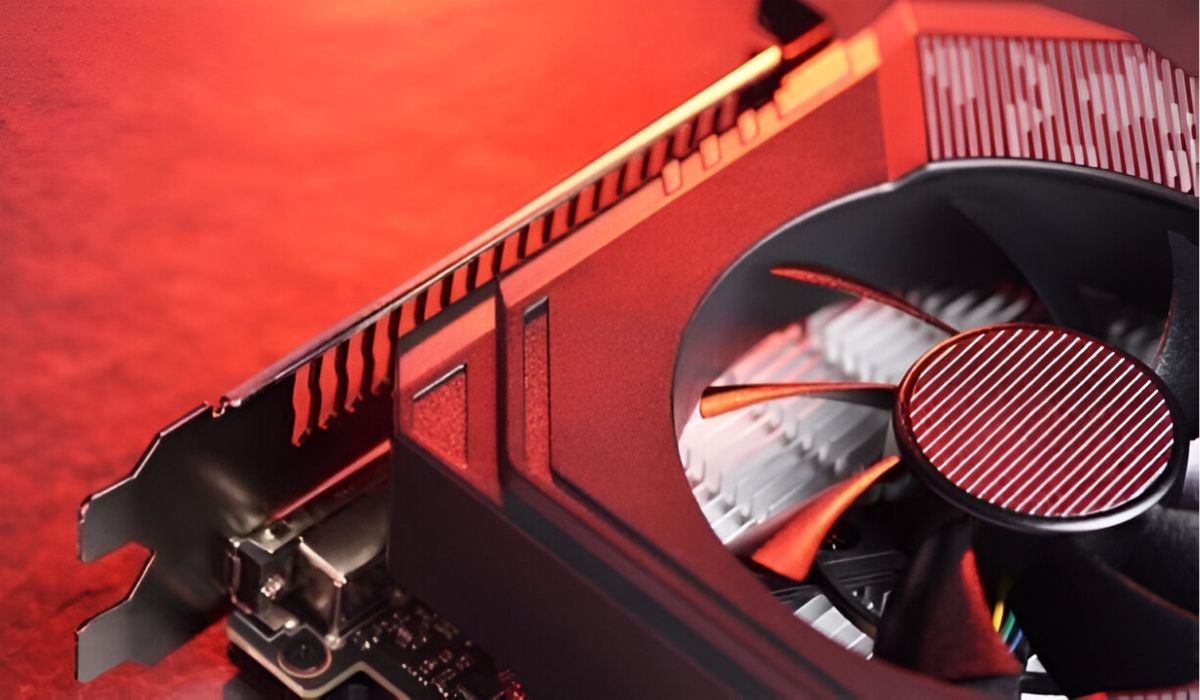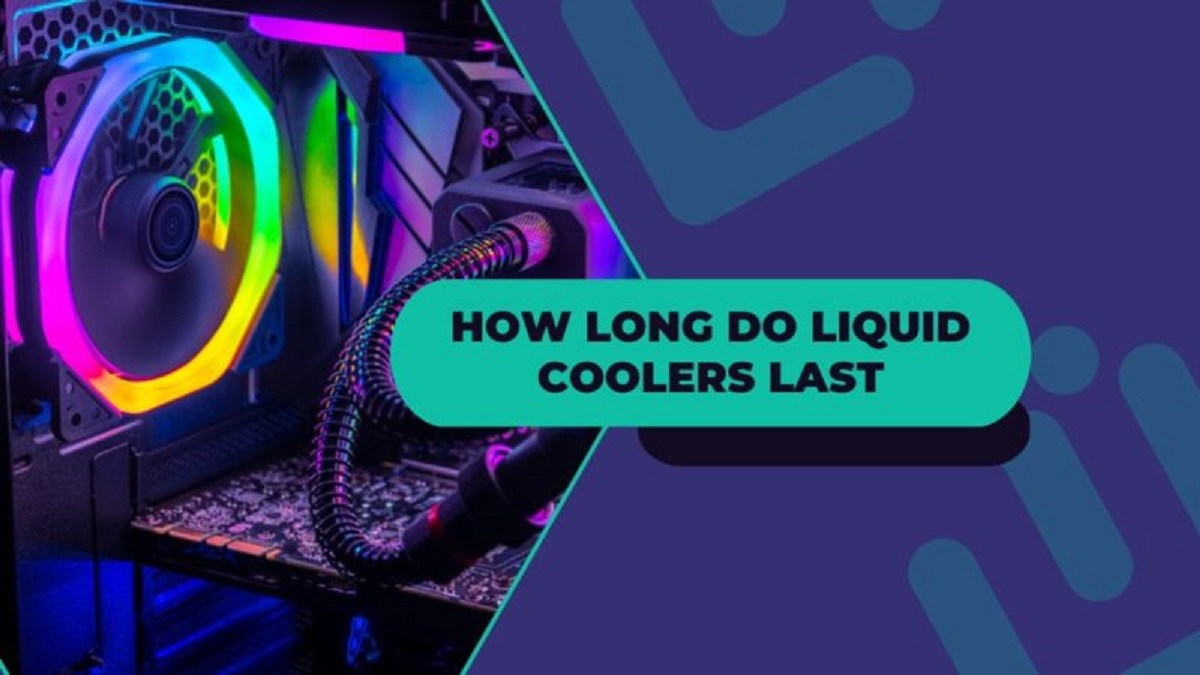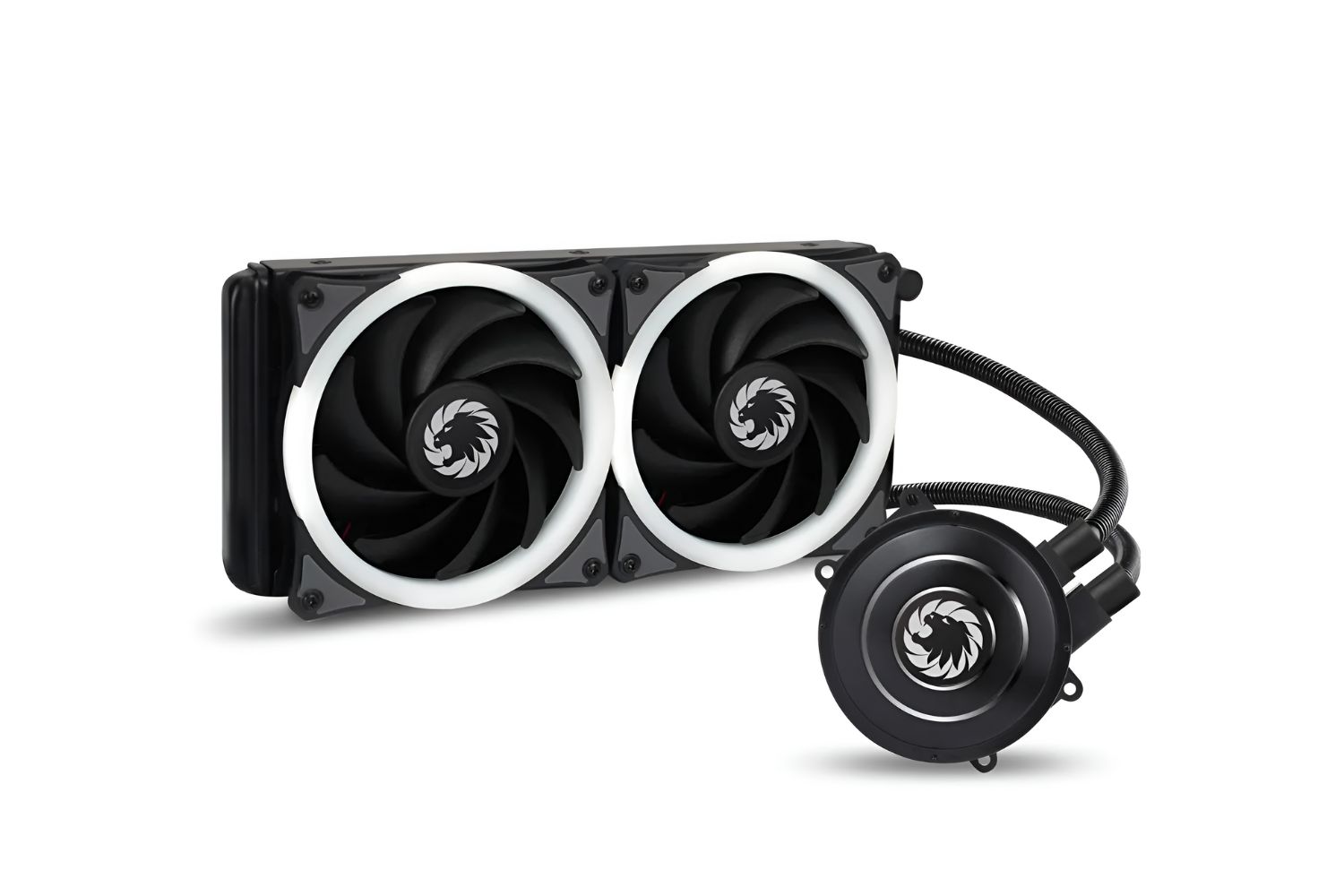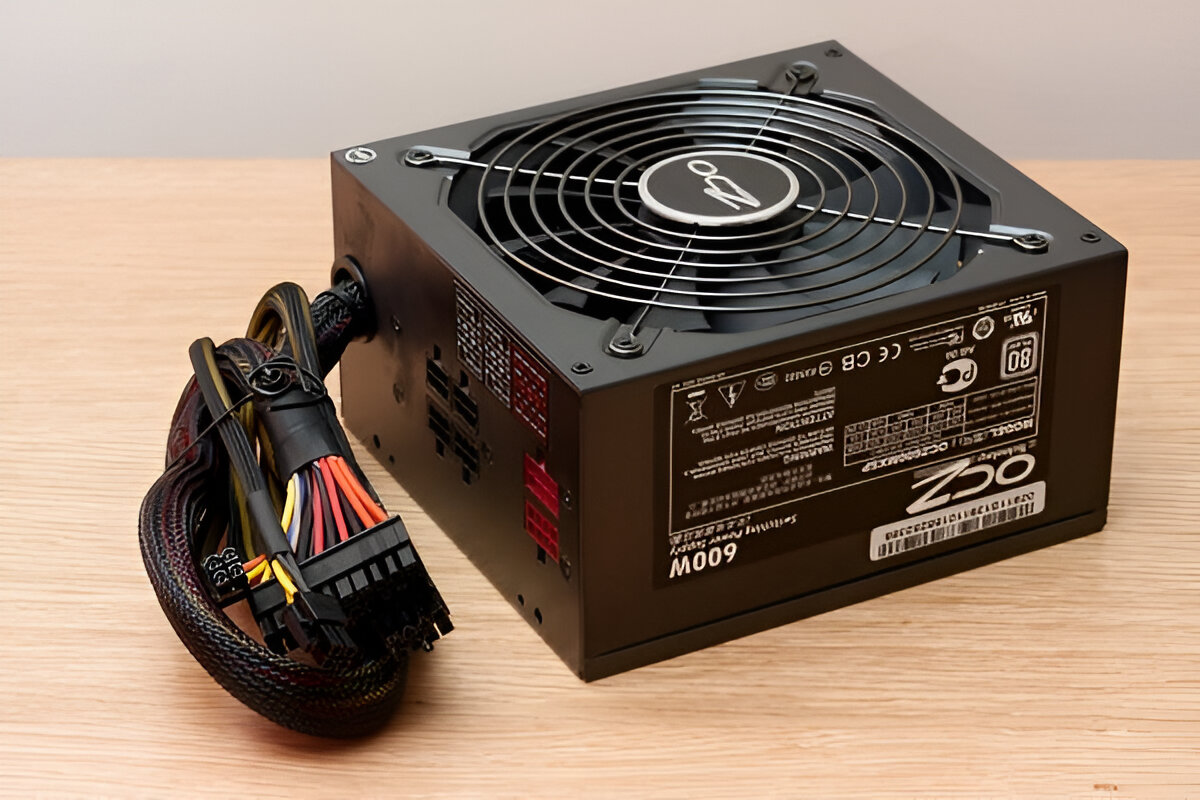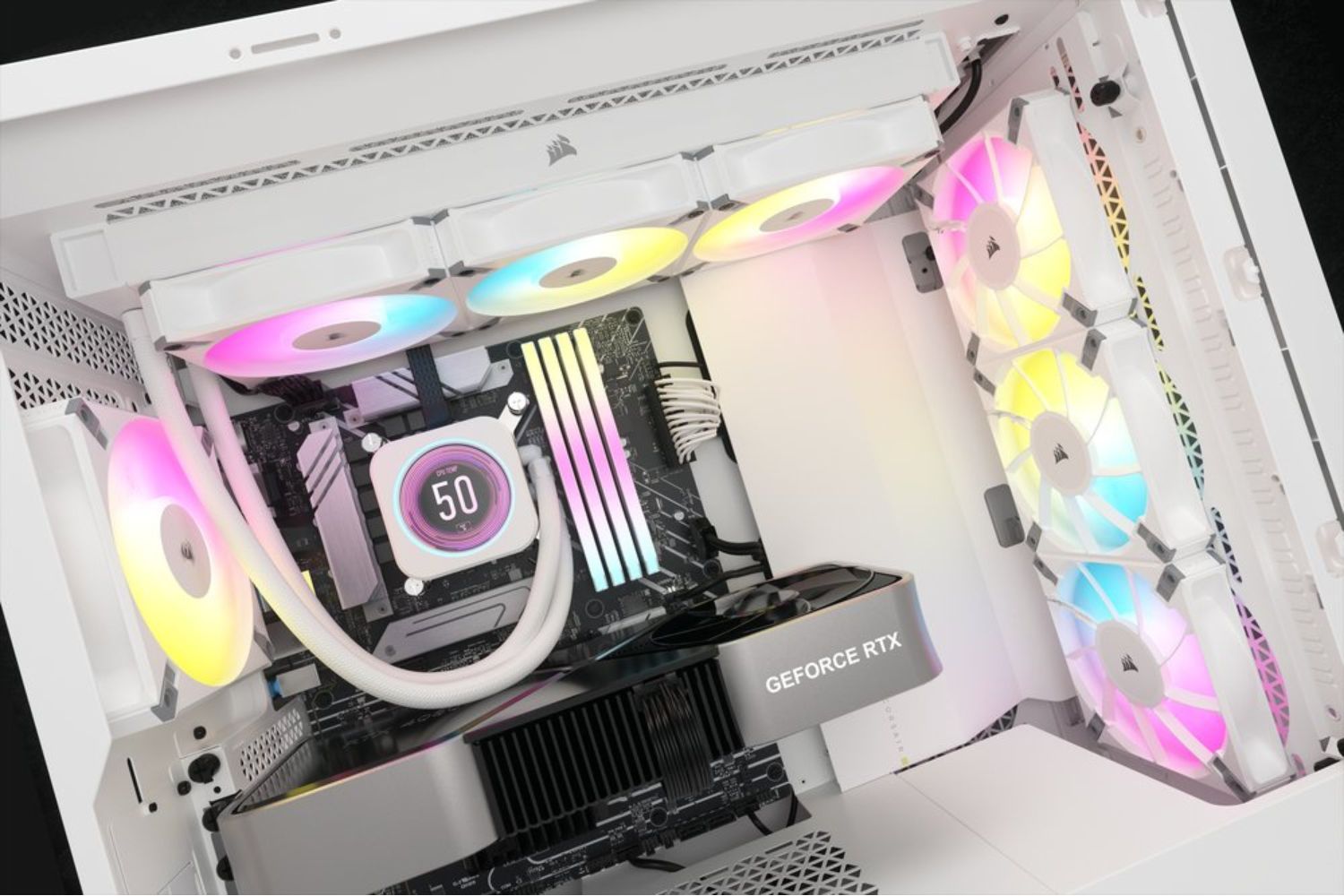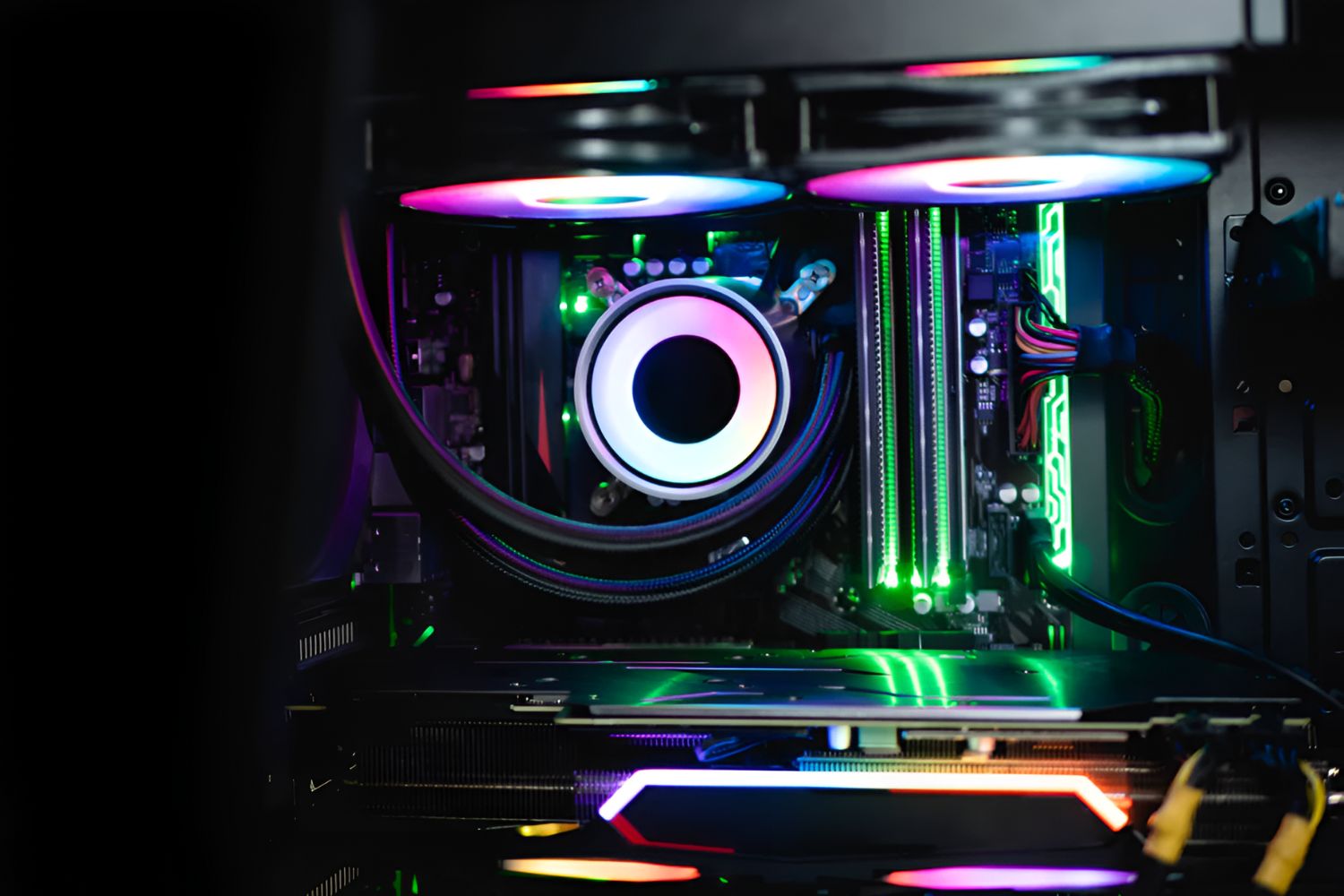Introduction
Welcome to the world of computer hardware, where components work in harmony to power your digital experience. Among these components, your CPU (Central Processing Unit) is the brain of your computer, responsible for executing tasks and processing data. As the CPU performs its tasks, it generates heat, which can potentially damage the delicate internal components if not properly managed.
This is where the CPU cooler comes into play. A CPU cooler is a crucial component that helps dissipate the heat generated by the CPU, ensuring optimal performance and preventing overheating. Just like any other hardware component, the effectiveness of your CPU cooler can diminish over time, requiring replacement to maintain reliable cooling performance.
In this article, we will explore the importance of CPU cooler replacement, the factors that affect its lifespan, signs that indicate the need for replacement, and how often you should consider replacing your CPU cooler. Whether you are a hardcore gamer, a creative professional, or a casual computer user, understanding the lifespan and replacement requirements of your CPU cooler is essential for keeping your system running smoothly.
So, let’s dive in and explore the world of CPU coolers, discovering the signs that indicate it’s time for a replacement, and gather some tips to prolong the lifespan of this essential component.
Importance of CPU Cooler Replacement
The CPU cooler plays a vital role in maintaining the temperature of your CPU. Over time, the cooling effectiveness of the cooler can degrade due to various factors such as dust accumulation, thermal paste deterioration, and fan wear. These issues can lead to increased CPU temperatures, which can negatively impact the performance and longevity of your system.
One of the primary reasons to replace your CPU cooler is to ensure optimal cooling performance. As CPUs continue to evolve and become more powerful, they generate more heat. If your cooler is outdated or not functioning properly, it may struggle to keep up with the cooling demands of modern CPUs, resulting in higher temperatures. Excessive heat can lead to thermal throttling, where the CPU reduces its performance to prevent damage.
Furthermore, high temperatures can also shorten the lifespan of your CPU. Extended exposure to elevated temperatures can degrade the internal components, reducing their reliability and potentially causing the CPU to fail prematurely. By regularly replacing your CPU cooler, you can help maintain lower temperatures and extend the lifespan of your CPU.
Another crucial aspect of CPU cooler replacement is noise reduction. As CPU coolers age, the fans can become louder due to wear and tear. This can be quite annoying, especially if you prefer a quiet computing environment. By upgrading your cooler, you can take advantage of newer, more efficient designs that provide better cooling performance while operating at lower noise levels.
Additionally, installing a new CPU cooler gives you an opportunity to enhance the overall aesthetics of your system. Many aftermarket CPU coolers come with aesthetically pleasing designs, including RGB lighting options. By selecting a cooler that matches your desired aesthetic, you can elevate the visual appeal of your computer.
Overall, replacing your CPU cooler is essential for maintaining optimal performance, prolonging the lifespan of your CPU, reducing noise levels, and enhancing the overall appearance of your system. By staying proactive and keeping your cooling solution up to date, you can ensure that your computer operates at peak efficiency and remains cool under pressure.
Factors Affecting CPU Cooler Lifespan
Several factors can impact the lifespan of your CPU cooler. Understanding these factors can help you gauge when it’s time for a replacement and take necessary preventive measures to prolong its lifespan. Let’s explore some of the key factors below:
1. Build Quality: The build quality of your CPU cooler is a crucial determinant of its longevity. Cooler models with higher-quality materials and robust construction tend to have a longer lifespan compared to cheaper, flimsier options. Investing in a well-built CPU cooler from reputable brands can ensure better durability and lifespan.
2. Cooling Method: CPU coolers come in various types, such as air coolers and liquid coolers. Liquid coolers tend to have a longer lifespan due to their sealed design and efficient heat dissipation capabilities. Air coolers, on the other hand, may be more prone to dust accumulation, which can impact their cooling performance over time.
3. Maintenance: Regular maintenance plays a critical role in extending the lifespan of your CPU cooler. Dust and debris buildup can hinder airflow and decrease cooling efficiency. It is recommended to clean your CPU cooler periodically by removing dust with compressed air or a soft brush. Proper maintenance can help prevent overheating and ensure the longevity of your cooler.
4. Overclocking: Overclocking is the process of running your CPU at higher frequencies than the manufacturer’s specifications. While overclocking can provide performance benefits, it also generates more heat. Excessive heat can place additional strain on your CPU cooler, potentially shortening its lifespan. If you frequently overclock your CPU, consider investing in a high-quality and robust cooler to handle the increased heat load.
5. Ambient Temperature: The ambient temperature of your computing environment can affect the cooling performance and lifespan of your CPU cooler. If your computer is constantly exposed to high temperatures, the cooler needs to work harder to dissipate heat, potentially shortening its lifespan. Ensure that your computer is placed in a well-ventilated area with adequate airflow to maintain optimal cooling conditions.
6. Usage Intensity: The intensity of your computer usage can impact the lifespan of your CPU cooler. If you frequently engage in demanding tasks, such as gaming or video editing, your CPU will generate more heat, requiring the cooler to work harder. If your computer is often under heavy load, it’s important to monitor the temperatures and consider more robust cooling solutions.
In summary, the lifespan of your CPU cooler is influenced by factors such as build quality, cooling method, maintenance, overclocking, ambient temperature, and usage intensity. Understanding these factors can help you make informed decisions regarding replacement and take appropriate measures to prolong the lifespan of your CPU cooler.
Signs Your CPU Cooler Needs Replacement
The CPU cooler plays a crucial role in maintaining the temperature of your CPU, ensuring optimal performance and longevity. Over time, however, your CPU cooler may show signs of wear and tear, indicating the need for a replacement. Here are some common signs that your CPU cooler may need replacement:
1. Increased CPU Temperatures: One of the first indicators that your CPU cooler may need replacement is consistently high CPU temperatures. If you notice that your CPU is running hotter than usual, even during regular tasks, it could be a sign that your cooler is no longer effectively dissipating heat. Monitoring your CPU temperatures using software utilities can help you identify any abnormal temperature spikes.
2. Excessive Noise: As CPU coolers age, the fans can become louder due to wear and tear. If you notice an increase in fan noise coming from your CPU cooler, it could be a sign that the bearings are starting to fail or that the fan blades are becoming less efficient. This can be particularly noticeable when the fan is running at high speeds. If the noise becomes bothersome or disruptive, replacing the cooler can help restore a quieter computing environment.
3. Fan Malfunction: If the fan on your CPU cooler stops spinning altogether or is not functioning properly, it is a clear indication that a replacement is needed. A non-functioning fan not only compromises the cooling performance but also puts your CPU at risk of overheating. Regularly inspecting and testing the fan to ensure smooth operation is essential in maintaining optimal cooling efficiency.
4. Cracked or Damaged Cooling Block: Liquid coolers, which consist of a pump and cooling block, can develop cracks or other damages over time. If you notice any visible damage to the cooling block or signs of leakage around the pump area, it is crucial to replace the cooler immediately. Operating a damaged liquid cooler can result in coolant leaks, potential damage to other components, and compromised cooling performance.
5. Frequent System Crashes or Instability: If your CPU is consistently running hot due to an inefficient cooler, it can lead to system crashes, freezing, or general instability. Overheating CPUs can trigger the system to shut down or throttle the performance to avoid further damage. If you experience frequent crashes or system instability, it is worth investigating the cooling solution, as a faulty cooler could be the underlying cause of the issue.
6. Outdated Technology: As technology advances, so does CPU cooler design and efficiency. If you are using an outdated CPU cooler, it may not be able to adequately handle the cooling demands of newer processors. Upgrading to a more modern and efficient cooler can ensure better temperature management and overall system performance.
By keeping an eye out for these signs, you can determine if your CPU cooler is due for a replacement. Regularly monitoring temperatures, inspecting fan operation, and considering the age and technology of your current cooler will help you make informed decisions to maintain optimal cooling performance for your system.
How Often Should You Replace Your CPU Cooler?
The frequency at which you should replace your CPU cooler depends on several factors, including the type of cooler, usage intensity, and the overall condition of the cooler. While there is no one-size-fits-all answer, here are some general guidelines to consider:
1. Stock Coolers: If you are using the stock cooler that came bundled with your CPU, you may consider replacing it sooner rather than later. Stock coolers are often basic in design and may not provide optimal cooling performance, especially if you are regularly pushing your CPU to its limits. Upgrading to an aftermarket cooler can offer better cooling efficiency, quieter operation, and even potential overclocking headroom.
2. Air Coolers: Air coolers tend to have a longer lifespan compared to stock coolers, thanks to their sturdy construction. While there is no fixed timeframe for replacement, it is recommended to consider upgrading your air cooler every 3 to 5 years, especially if you notice rising temperatures or increased noise levels. This can help ensure that your cooler remains effective in dissipating heat and maintaining optimal CPU temperatures.
3. Liquid Coolers: Liquid coolers, consisting of a pump, radiator, and fan combination, generally have a longer lifespan than air coolers. With proper maintenance and monitoring, liquid coolers can last for 5 to 7 years or even longer. However, it is essential to regularly inspect the cooler for any signs of damage, leakage, or deterioration. If you notice any issues, replacing the liquid cooler promptly is crucial to prevent potential damage to your components and maintain effective cooling.
4. Usage Intensity: The intensity of your computer usage can impact the lifespan of your CPU cooler. If you frequently engage in resource-intensive tasks such as gaming, 3D rendering, or video editing, your CPU will generate more heat, placing additional stress on the cooler. Consider more frequent replacements if you regularly push your CPU to its limits to ensure that your cooler can keep up with the cooling demands.
5. Maintenance and Monitoring: Regular maintenance, such as cleaning dust and debris from your cooler and monitoring temperatures, plays a crucial role in determining when to replace your CPU cooler. If you notice a decline in cooling efficiency, increased noise levels, or rising temperatures despite proper maintenance, it may be time to replace your cooler.
Ultimately, the decision to replace your CPU cooler should be based on the specific circumstances of your system. Regularly assessing the cooling performance, age, and condition of your cooler can help you determine when an upgrade is necessary. It’s important to remember that investing in a high-quality aftermarket cooler can significantly improve your system’s overall cooling efficiency and longevity.
Tips for Prolonging the Lifespan of Your CPU Cooler
By following these tips, you can help extend the lifespan of your CPU cooler and maintain optimal cooling performance for your system:
1. Regular Cleaning: Dust and debris can accumulate on your CPU cooler over time, hindering airflow and reducing cooling efficiency. Regularly clean your cooler by using compressed air or a soft brush to remove any dust buildup on the heatsinks, fan blades, and vents. This will help maintain proper airflow and prevent overheating.
2. Apply Fresh Thermal Paste: Thermal paste provides optimal heat transfer between the CPU and the cooler. Over time, the thermal paste can deteriorate, resulting in poorer heat dissipation. Consider reapplying thermal paste every 1-2 years or when you notice higher CPU temperatures. Remove the old thermal paste carefully using isopropyl alcohol and apply a fresh, thin layer before reattaching the cooler.
3. Optimize Case Airflow: Proper airflow in your computer case is essential for efficient cooling. Ensure that your case has adequate intake and exhaust fans to create a balanced airflow. Additionally, organizing cables and keeping the interior clean can help improve airflow and prevent obstructions that can impact cooler performance.
4. Monitor Temperatures: Regularly monitor your CPU temperatures using software utilities or BIOS monitoring tools to detect any abnormalities. Keeping an eye on temperature trends allows you to identify potential cooling issues early on, enabling timely actions to prevent CPU damage or performance degradation.
5. Avoid Overclocking Beyond Safe Limits: Overclocking can push your CPU and cooler to their limits, generating higher temperatures and potentially shortening the lifespan of the cooler. If you choose to overclock, ensure that you are within safe limits and that your cooling solution can handle the increased heat. Always monitor temperatures during overclocking sessions and revert to stock settings if temperatures exceed safe ranges.
6. Maintain a Dust-Free Environment: Minimize dust accumulation by keeping your computer in a clean and dust-free environment. Consider using dust filters on intake fans to reduce the amount of debris entering your system. Regularly clean the area around your computer to prevent dust from settling on your CPU cooler and other components.
7. Provide Adequate Ventilation: Ensure that your computer has proper ventilation in the room or space where it is located. Good airflow in the room can help disperse heat more efficiently, reducing the workload on your CPU cooler. Avoid placing your computer in enclosed spaces or against walls that limit airflow.
8. Invest in Quality Cooling Solutions: Upgrading to a high-quality aftermarket CPU cooler can significantly improve cooling performance and lifespan. Research and invest in reliable and well-reviewed coolers that are suitable for your CPU and system requirements. Higher-quality coolers often come with better fans, heatsinks, and overall construction, resulting in more efficient heat dissipation and longer lifespan.
By implementing these tips, you can prolong the lifespan of your CPU cooler and maintain optimal cooling performance for your system. Regular maintenance, proper airflow management, and monitoring temperatures are key to ensuring a healthy and efficient cooling solution.
Conclusion
The CPU cooler is a critical component in maintaining the temperature and performance of your computer’s CPU. Understanding the importance of CPU cooler replacement, the factors that affect its lifespan, and the signs that indicate the need for replacement is crucial for the overall health and longevity of your system.
Deteriorating cooling performance, increased temperatures, excessive noise, and malfunctioning fans are all indicators that your CPU cooler may need replacement. By regularly monitoring your CPU temperatures, inspecting your cooler for any damage, and considering the intensity of your computer usage, you can make informed decisions about when to replace your CPU cooler.
To prolong the lifespan of your CPU cooler, proper maintenance is essential. Regularly cleaning the cooler to remove dust and debris, applying fresh thermal paste, optimizing case airflow, monitoring temperatures, avoiding excessive overclocking, maintaining a dust-free environment, providing adequate ventilation, and investing in quality cooling solutions are all effective practices.
Remember that the lifespan of your CPU cooler can vary based on factors such as the type of cooler, usage patterns, and maintenance. It’s important to stay proactive and monitor the performance of your CPU cooler to ensure optimal cooling efficiency and protect the longevity of your CPU.
By taking the necessary steps to care for your CPU cooler, you can ensure that your computer operates at peak performance, remains cool under pressure, and provides you with a reliable and enjoyable computing experience.







